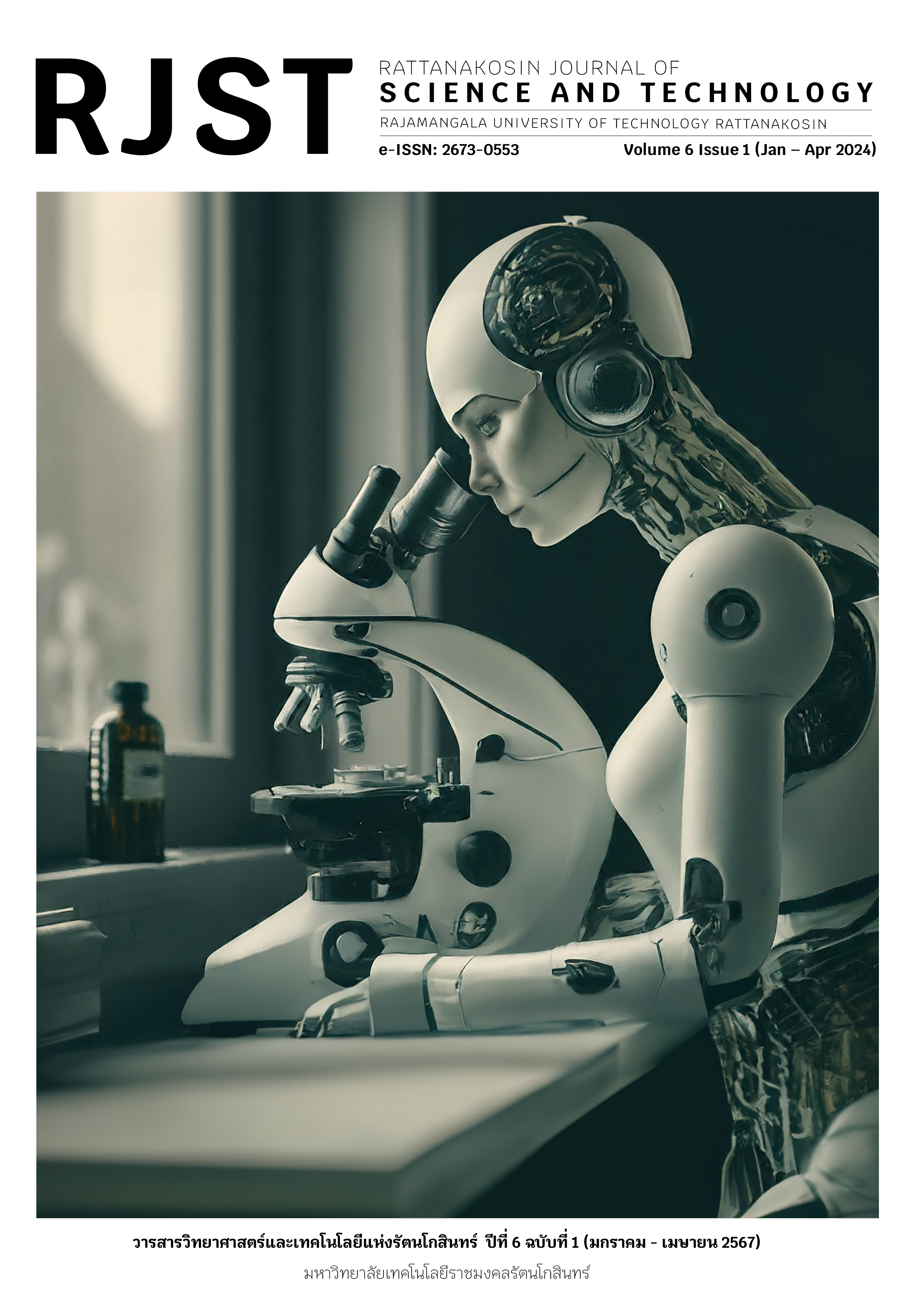A study of radiation measurement using CMOS camera in smartphones digital camera
Main Article Content
Abstract
Background: X-ray radiography has played a vital role as a part of radiation technique in non-destructive testing (NDT). This technique is utilized as a tool which is invisible by visual inspection. Combining the availability of smart phone and the high efficiency of their CMOS camera, there has been an interest in using smart phone as a radiation monitoring device. Objectives: This research aims to study a radiation counting system using a CMOS camera in smartphones with Android and IOS systems, in comparison with ionization chambers. Materials and Methods: The X-ray counting system in this study consists of an X-ray generator, smartphones with Android and IOS systems, ionization chambers and the ImageJ program for image analysis. The distance from X-ray generator to image receptor (smartphone) was set at 100 cm. The voltage of the X-ray generator was fixed at 100 kVp, while the exposure time was varied from 2, 4, 6, 8, 10, 12, 16, and 20 mAs. The radiographic images were received by a CMOS sensor of the digital camera in the smartphones, which were sealed with duct tape to avoid any unrelated visible light. The radiographic images were analyzed in terms of image intensity, radiation counting capability, and standard deviation (S.D.). Results: Experimental results showed that the exposure time (mAs) of X-ray generator affects the quality of radiographic images in terms of radiation counting value, image intensity, and noise. Image intensities of radiographic images darkened with increasing exposure time from 2 to 20 mAs. The radiation counting value and image noise increased with increasing exposure time in the range of 2 to 12 mAs. A similar phenomenon was also observed by using ionization chambers. However, the exposure time level cannot exceed 8 mAs since it is over the limit of a CMOS sensor. Conclusion: The X-ray counting system using radiographic images from a smartphone proposed in this research is an important basis for developing a radiation counting system, as well as other different techniques in the future.
Article Details

This work is licensed under a Creative Commons Attribution-NonCommercial-NoDerivatives 4.0 International License.
The content within the published articles, including images and tables, is copyrighted by Rajamangala University of Technology Rattanakosin. Any use of the article's content, text, ideas, images, or tables for commercial purposes in various formats requires permission from the journal's editorial board.
Rajamangala University of Technology Rattanakosin permits the use and dissemination of article files under the condition that proper attribution to the journal is provided and the content is not used for commercial purposes.
The opinions and views expressed in the articles are solely those of the respective authors and are not associated with Rajamangala University of Technology Rattanakosin or other faculty members in the university. The authors bear full responsibility for the content of their articles, including any errors, and are responsible for the content and editorial review. The editorial board is not responsible for the content or views expressed in the articles.
References
Kang, H. G. et al. (2016). An investigation of medical radiation detection using CMOS image sensors in smartphones. Nucl. Instrum. Methods Phys. Res. Sect, 823, 126-134.
Pairote S. (2003). A 0.7 µm CMOS continuous-time filter for 13.5MHz sampled video signal application [Masteral Dissertation, Chulalongkorn University].
(2011, April). CMOS centers. https://whatis.techtarget.com
(2011, April). CMOS centers. https://www.britannica.com/technology/complementary-metal-oxide-semiconductor
Panapon S. (2018). Development of X-ray computed tomography technique by using fluoroscopic images recorded with digital camera [Masteral Dissertation, Chulalongkorn University].
(2019, October). Digital. https://snapshot.canon-asia.com/thailand/article.
(2021, April). Smartphones. https://blog.mysms.com/how-smartphones-change-the-way-we-live.html.
Jan, T. Frank, W. Johannes, Z. (2005). Radiation sources: types and suitability for dose delivery to tissues for sterilization. Sterilisation of Tissues Using Ionising Radiations. 1th ed., Woodhead Publishing. England.
C. S., W. D. and R. L. (2018). Industrial X-ray Computed Tomography, Gewerbestrasse. Switzerland.
J. T. and B. (2012). The essential physics of medical imaging. 3th ed., Wolters Kluwers business. USA.
Panapon S, Manasavee L, Somyot S. (2020). A study of effects on image quality from different settings of radiographic imaging system using fluorescence screen and digital camera. In International congress on science, technology and technology-based innovation (STT46).
Viriya P. (2014). Comparison of digital image quality obtained from different image sensors [Masteral Dissertation, Chulalongkorn University].
Kitinun S. (2005). Development of a removable memory personal digital dosimeter [Masteral Dissertation, Chulalongkorn University].
Saman I. (2010), Development of a high radiation resistant visualising system for under water remote inspection [Masteral Dissertation, Chulalongkorn University].
Nuatawan T. (2015), Measurement of x-ray dose rate using smartphones [Masteral Dissertation, Chulalongkorn University].
Sandy T. (2015), Measurement of gamma-ray dose rate using smartphones [Masteral Dissertation, Chulalongkorn University].
Suteera S. (2011), Development of an x-ray imaging system using fiber optic scintillator with digital camera [Masteral Dissertation, Chulalongkorn University].
Parkphum O. (2017), Development of technique for screening liquids in unopened bottle using low energy x-ray transmission [Doctoral Dissertation, Chulalongkorn University].
Chalermpong P. (2015), Comparative Investigation and Improvement of Film Radiography Speed for Non-Destructive Inspection of Industrial Specimens [Doctoral Dissertation, Chulalongkorn University].
Nopparat K. (2018), Development of x-ray imaging technique recorded by digital camera for liquid screening [Masteral Dissertation, Chulalongkorn University].
(2020, May). Radiographic film high contrast. http://iriheafcq.changeip.com


